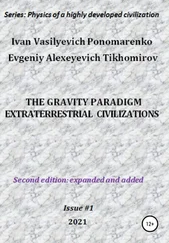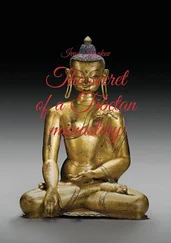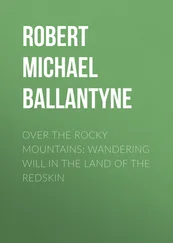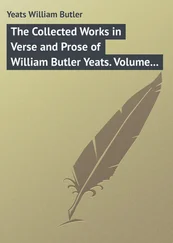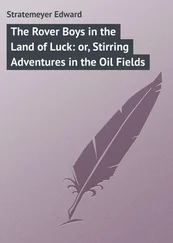“All this was dug up in Kiev Region,” the young man hazarded a guess, “but I’ve never heard that stones like that are found anywhere in the Ukraine… Who could we ask?” And the young man looked round the big gallery.
It was just their bad luck that there was not a single museum guide anywhere within sight, nobody but the woman caretaker on her chair near the staircase.
From the staircase came the sound of footsteps and a tall man in a carefully pressed black suit came down into the gallery. From the way the caretaker got up and greeted him with deference the girl guessed rightly that he was a man of importance in the museum. She gave her companion a quiet nudge but he was already on his way to meet the newcomer; standing to attention, sailor-fashion, he began:
“May I ask you something?”
“Certainly. What is it you want to know?” said the scientist, screwing up his near-sighted eyes to examine the young couple.
The sailor told him what had interested them. The scientist laughed.
“You have a nose for good things, young man!” he exclaimed approvingly. “You’ve lighted on one of the most interesting exhibits in our museum! Did you examine the carving closely? No? Too small? And what do you think this thing is for? Look!” He reached up and took hold of a wooden frame hinged to the upper edge of the show-case and lowered it over the glass. A big magnifying glass came into position exactly opposite the stone. He pressed a switch and a bright light was thrown on its surface. More interested than ever the young couple peered through the magnifying glass. The enlarged carving seemed to come to life. On one edge of the transparent, blue-green stone, fine but scanty lines traced the nude figure of a girl standing with her right hand raised to her cheek. Rolls of thick, curly hair lay on her delicately moulded shoulders. The face had been carved with great attention to detail.
The remaining part of the stone was filled by three male figures, their arms round each other’s shoulders; these figures were drawn with far greater skill than that of the girl.
The shapely muscular figures had been caught in motion. There was something dynamic in the turn of the bodies, strong, urgent and at the same time restrained. The big man in the centre, taller than those on either side of him, had thrown his mighty arms round their shoulders. The side figures, armed with spears, stood with their heads bent attentively. The poses expressed the tense vigilance of warriors ready at any moment to repulse the attack of an enemy.
The three tiny figures were the work of a great artist. The basic idea — fraternity, friendship and the common struggle — was expressed with extraordinary force.
The charm of the bright, transparent stone, that served both as material and as background, greatly enhanced the beauty of the cameo. A limpid, warm tint that seemed to emanate from the depths of the cold transparent stone tinged the bodies of the three embracing men with the golden joy of sunshine…
Under the figures and on the smooth, lower edge some incomprehensible marks had been hurriedly and irregularly scratched.
“Have you had a good look? I can see you’re thrilled with it.” The voice of the archaeologist gave the young people a start. “Good. If you like, I’ll tell you something about that stone? It is one of the riddles that we sometimes meet in the historical documents of the past. Listen while I tell you just what the riddle is. That stone is a beryl, in general not a particularly rare mineral, although blue-green beryls of such pure water are rare enough; they are found in South Africa and nowhere else in the world. That’s the first point. The carving on the stone is a cameo and ornaments of this type were greatly admired in Greece when ancient Hellenic art was at its best. Now the beryl is a very hard stone and such a carving could only have been made with a diamond which the Greek sculptors did not have. That’s the second point. Next, take the three male figures — the central one is undoubtedly a Negro, the one on the right a Hellene, and that on the left, one of the Mediterranean peoples, probably a Cretan or an Etruscan. Lastly, the quality and technique indicate that the work belongs to the most flourishing period in the history of Greece; nevertheless there are a number of features that show that it was made at a much earlier date. And then, the spears are of a peculiar shape unknown in either Greece or Egypt… So you see there are several contradictions, a number of incompatible indicants… but despite them the cameo exists, it’s before your eyes…”
The archaeologist paused and then continued in the same abrupt way:
“There are many more historical riddles. All of them tell us one thing: how little we know. We have very little knowledge of how the ancient peoples lived. Amongst the Scythian works of art in our gold repository, for example, we have a gold buckle. It is two thousand six hundred years old and carries the image of the extinct sabre-toothed tiger in all its details. Yes, yes, and the palaeontologists will tell you that the sabre-toothed tiger became extinct three hundred thousand years ago… Ha! And in Egyptian tombs you will see frescoes on which every kind of animal found in Egypt is drawn with amazing accuracy. Amongst them is an unknown animal of tremendous size that looks like a giant hyena — such an animal is unknown in Egypt, in all Africa, in fact. And then, in the Cairo Museum, there is a statue of a girl found in the ruins of the city of Akhetaton, built in the 14th century B.C. — she is not an Egyptian and the work is not Egyptian, it is like something from another world. My colleagues will tell you that it is con-ven-tion-al-ized,” drawled the archaeologist with a touch of sarcasm. “In connection with this I always like to recall another story. On those same Egyptian wall paintings you often come across a little fish. Just a tiny fish with nothing special about it except that it is always drawn upside down, belly upwards. How could the Egyptians, whose drawings are always so precise, draw such an unnatural fish. Explanations, of course, were forthcoming: it was explained away by conventionalism, by religion, by the influence of the cult of the god Amon. The conclusions were quite convincing and everybody was satisfied. Then it was discovered that there is a fish in the Nile today exactly like the one in the paintings — it swims belly upwards! Very instructive. But I’m running away with myself! Good-bye, you’ll find the riddles of history interesting…”
“Just a minute, Professor!” exclaimed the girl. “Excuse me, but can’t you explain this riddle yourself… Tell us what you think about the stone…” The girl stopped in embarrassment.
The archaeologist smiled.
“There’s no getting away from you. All that I can tell you is sheer guesswork, that’s all. One thing is certain: real art reflects life, art itself is living and can only rise to new heights in the struggle against the old. In the distant past, when that cameo was carved, slavery, oppression and lawlessness reigned supreme. Many people lived out their lives in perpetual misery. There were slaves, however, who fought for their emancipation, and oppressed people who rose up in arms against their oppressors. And when one looks at this cameo one feels that the friendship of the three warriors arose out of the fight for liberty… Perhaps they fled from ‘slavery to their own countries… I think that cameo is further evidence of a struggle waged in a distant epoch and hidden from us by time. It is even possible that the unknown artist also took part in the fight… Yes, he must certainly have been there, otherwise his work could not have been so perfect. And look how both of you fixed your attention on the cameo.”
Читать дальше







